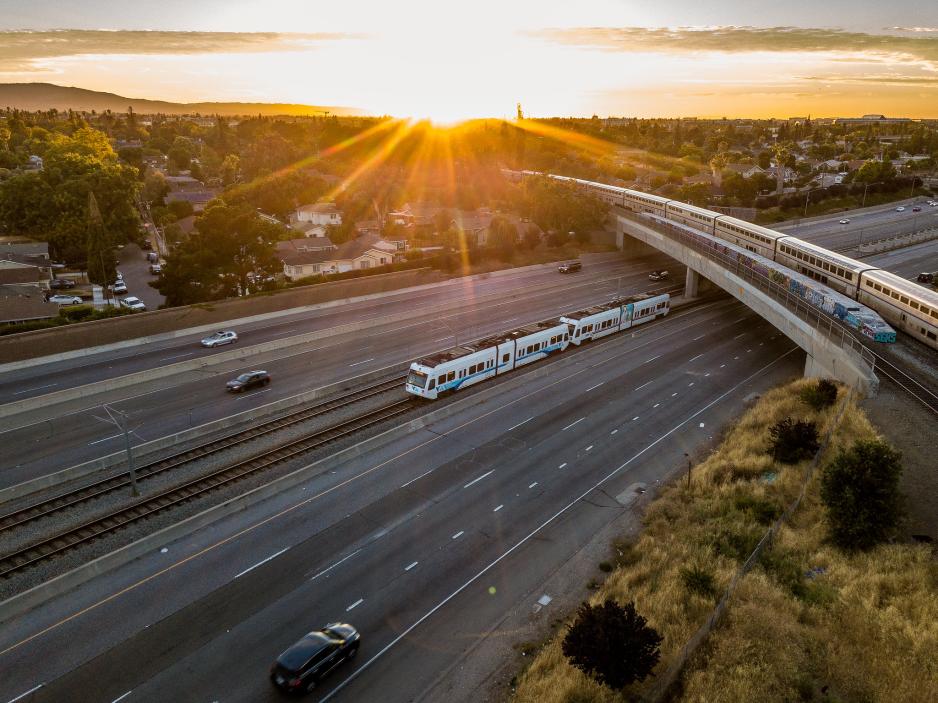Light Rail Transit—or LRT—has shaped cities as they developed concentrations of activities and upward growth by providing a clean and efficient mode of transportation for large concentrations of people. While the focus of this section is on light rail transit, the information can also apply to heavy rail or commuter systems such as Caltrain and BART.
LRT can respond to many different settings and operating conditions from mixed-flow operations in-street to elevated guideways and subways. Due to the significant capital investment to construct an LRT system, once operating, it is not very adaptable to future changes in planning or land use. It operates most effectively in dense urban cores but in some cases can be effective in low-density suburban neighborhoods. Trains can vary in length and frequency can be adjusted to respond to changing demand and special operating needs. However, without high-quality advanced planning and design, operating inefficiencies can result, which can lead to degraded levels-of-service and increased operating and maintenance costs.
Given the complexity and long-range aspects of corridor planning studies it is important that VTA and local jurisdictions with land use and approval authority coordinate planning efforts early with synergy.
The Planning Process
The planning and development of rail transit services is a comprehensive effort lead by VTA in partnership with cities and co-created with community members based on needs.
Role of Local Jurisdictions
Local jurisdictions play an essential role in the ultimate viability and success of rail transit. Rail service must be considered early in the planning process and reflected in General Plans.
Transit Planning Best Practices
Moving people quickly, reliably, and safely are important features for establishing transit ridership. For light rail to be an attractive transportation mode and competitive with the automobile, it must be direct.
Improving Station Area Environments
Partnerships and collaboration between local jurisdictions, developers, and community members are important to develop station areas that are attractive and functional to the surrounding community.
Station Area Design
Station areas can be a place for transit and act as a community hub. They should support transit operations, the needs of transit riders, and be well-integrated with their surroundings.
